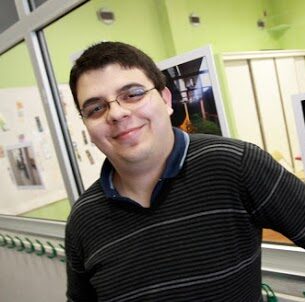ICB – Laboratoire interdisciplinaire Carnot de Bourgogne
Annuaire

HAMMANI Kamal
- UFR Sciences et Techniques, Batiment Mirande (Dijon), Aile D, Bureau DR11A
- IUT Chalon-sur-Saône, Bâtiment SGM
Optique Non-Linéaire / Nanophotonique / Peignes de Fréquence
Coordonnées
Dr. Kamal Hammani (1985), doctorat de Physique (Université de Bourgogne, 2011); post-doc à l’Optoelectronics Research Center de l’Université de Southampton au Royaume-Uni (2012-2013); Maître de Conférences à l’Université de Bourgogne (depuis 2013).
Travaux de recherches (au Laboratoire Interdisciplinaire Carnot de Bourgogne, ICB UMR 6303 CNRS/uB) couvrant l’optique non-linéaire, les télécommunications par fibres optiques, la nanophotonique et la plasmonique en vue d’applications optoélectroniques dans le proche et moyen infrarouge.
Administration
En cours
- Porteur du projet INNOV+ (soutenu par RITM-BFC)
- Membre du Conseil Scientifique de l’ICB
- Animateur adjoint du Conseil Scientifique de l’ICB
- Membre élu du conseil d’administration de l’IUT de Chalon-sur-Saône
Anciennement
- Co animateur de l’axe traverse “Matériaux et Photonique pour la Santé” du laboratoire ICB
- Responsable de la L1 AGIL en Sciences et Techniques
- Membre du Conseil de Laboratoire (ICB)
- Membre du Conseil du Département de Physique
- Responsable du Module de Mesures Physiques en L2
- Responsable des TP d’Electronique Analogique (L3)
- Directeur Adjoint du Département de Physique
- Membre de la Commission de Proposition (Section 28-29-30)
- Responsable des TP « Expériences d’Optique » (M1)
- Responsable des TP de Biophysique (L2)
En cours
- ANR ELECTRODE (https://anrelectrode.wixsite.com/english)
- Implication dans les projets européens PLasmoniAC et Nebula
Terminés
- BQR
- ICB – projet BioDoT
- Implication dans le projet européen PlasmoFab
- European FP7-ICT-2011-7 CLARITY (dévelopement and démonstration de convertisseurs de fréquences ultra-large bande basés sur des nano-guides de silicium et des fibres optiques en verres de tellures, 2011-2014)
- LABEX ACTION (Smart Systems Integrated in Matter, 2012-2020) – porteur du projet INSPIRE
- Région Bourgogne PARI II : PHOTCOM (Photonique & Communications Optiques, 2014-2020).
- Projet ISITE-BFC Junior Fellowship (PI)
___________________________
ANR Project n° ANR-21-CE24-0010-01 (https://anrelectrode.wixsite.com/english/about)
ELECTRODE proposes to explore such highly nonlinear and dispersion engineered hybrid waveguides based mainly on two alternative materials, namely silicon-rich nitride and titanium dioxide. For the first time, this project considers thoroughly the titanium dioxide as an alternative platform for nonlinear integrated devices and particularly in the context of multi-octave supercontinuum generation.
Unfortunately, as in the case of optical fibers, it is necessary to specifically design a waveguide for a targeted application. Once manufactured, it is, in principle, difficult to adapt the dispersive properties. ELECTRODE will investigate, for the first time, the possibility of reconfiguring dispersive properties post-fabrication thanks to the thermo-optical properties of the considered materials.
This project will explore the limits of knowledge by focusing on modulated width waveguides also called dispersion oscillating waveguides. This project, which contains a large numerical part as well as advanced fabrication aspects and proof of principle, is also intended to be applied.
Solution 2.0
Solution 2.0 proposes a set of functions or devices based on nonlinearity or on thermo-optic effect working in any telecommunications band. For the first time, this project considers thoroughly the 2 µm waveband in the context of integrated devices for telecommunications and introduces a new photonic material almost unexplored in such a context: the titanium dioxide (TiO2).

This project is supported by the French “Investissements d’Avenir” program, project ISITE-BFC (contract ANR-15-IDEX-0003).
PlasmoFab
Find out more on: PlasmoFab

Focus
Unsuccessful ERC Starting Grant submission!

Optique Non-Linéaire / Nanophotonique / Peignes de Fréquence
_________________________
Activités de recherche
- Telecoms at 2µm
Nowadays, the communication traffic is inexorably increasing and the growing fiber-to-the-home (FTTH) deployment as well as the demand of high definition video content will not stop this trend. Unfortunately, it seems that we are reaching soon a ‘capacity crunch’. To prevent it, radical approaches have to be adopted. The two best candidates are the space division multiplexing and the emergence of a new spectral band. The favorite band is around 2 µm thanks to the large amplification band of Thulium. It is likely that the interest for the 2 µm wavelength band increases because it seems to be the perfect candidate for the convergence of fibers, photonics and plasmonics.
We are currently working on telecommunications at 2 µm. We explore the transmission of high bit-rate signal into subwavelength waveguides. Several material are considered as TiO2, SiGe, Si or SiN. First demonstrations have been recently published (see links). An (Open Access) interview is avalaible here.
- Titanium Dioxide and new emerging materials
The emergence of 2 µm band will never replace the existing telecommunications bands. Therefore, we are interested in an alternative platform that could be make bridges between all bands from the interconnects band at 850 nm to standard telecommunication band at 1.55 µm passing through the band at 1.310 µm. This is why we focus our attention on the titanium dioxide that is transparent from the visible to the Mid-infrared with negligible two-photon absorption. This platform will be benchmarked by comparison with already used platform (SOI, Silicon nitride, silicon Germanium).
The titanium dioxide (TiO2) is a low cost material compared to III-V semiconductors. It handles high power intensities and is non-toxic compared to chalcogenide glasses. It is transparent from the visible to the mid-infrared wavelength of interest in our project. Regarding the nonlinearity, we can expect at least 30 times better than silica . Moreover, it presents no TPA at standard telecommunications wavelength. This is why we believe that the titanium dioxide represents the perfect candidate for the next generation of telecommunication and all-optical processing.
We have recently shown that the ease of fabrication allows new kind of grating couplers. We have also demonstrated for the first time an octave-spanning supercontinuum generation in such waveguides
- Hybrid plasmonics
The ohmic losses are lower at higher wavelength (2µm) in such a way that surface plasmon polariton (SPP) has longer propagation length. This length stays too low to expect efficient nonlinear effect required for nonlinear all-optical processing. This is why we work on hybrid waveguides that could take advantage of SPP confinement features.
More specifically, we are interested in CMOS plasmonics and in the use of colloidal quantum dots (in the visible).
- Dual-Comb Spectroscopy
We are mainly interested in eletroc-optically generated combs at 2 µm and more recently on the conversion towards Mid-IR
- Physique Appliquée (BUT 1 SGM)
- Physique des Matériaux (BUT 2 SGM)
- Simulation Numérique (BUT 3 SGM)
- Techniques de Caractérisation des matériaux (BUT 1 et BUT3 SGM)
- Transition écologique pour le Développement Soutenable
Nos départements de Recherche
CO2M
Conception, Optimisation
et Modélisation
en Mécanique
ICQ
Interactions et
Contrôle Quantiques
Interfaces
Nanosciences
Photonique
PMDM
Procédés Métallurgiques Durabilité, Matériaux



